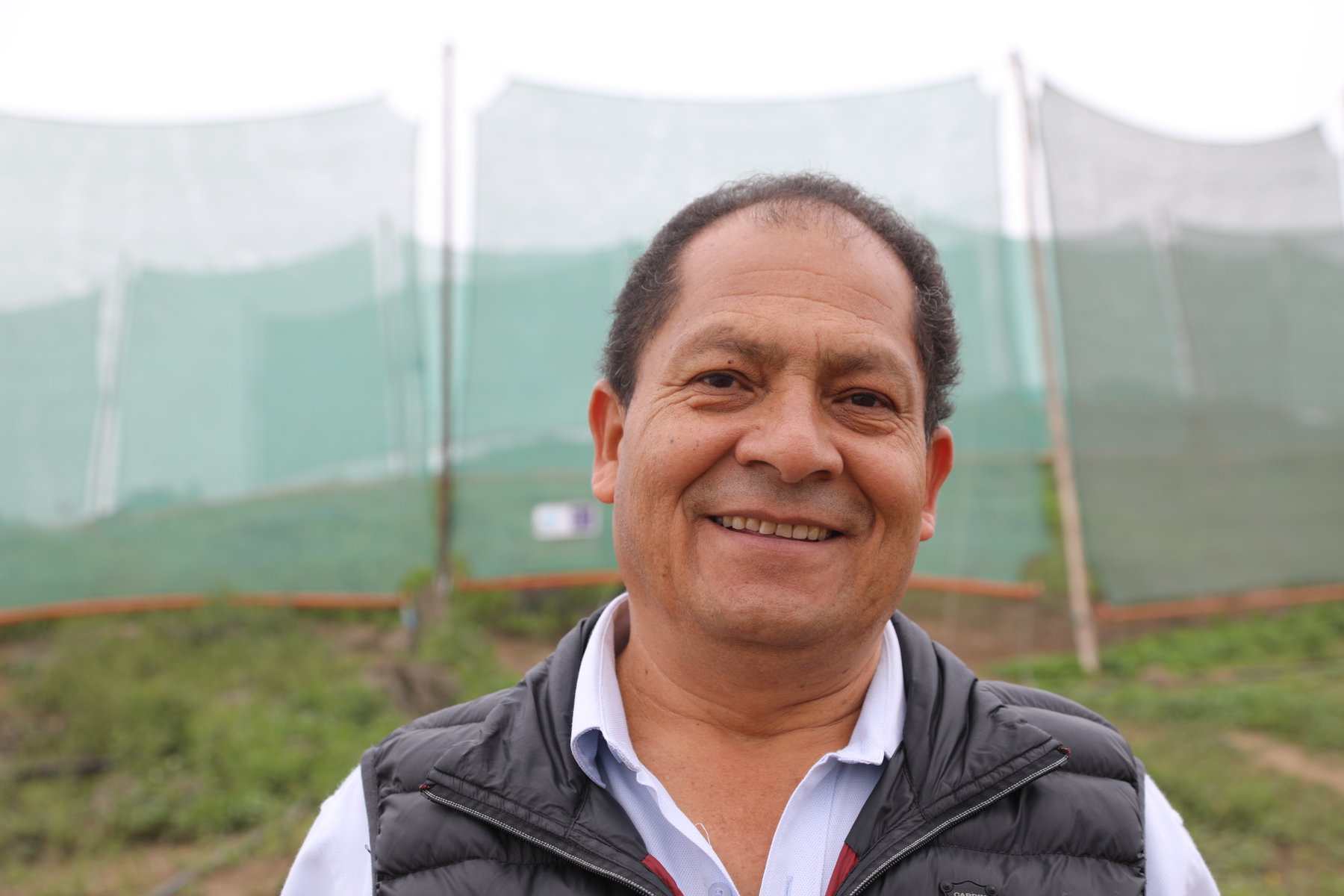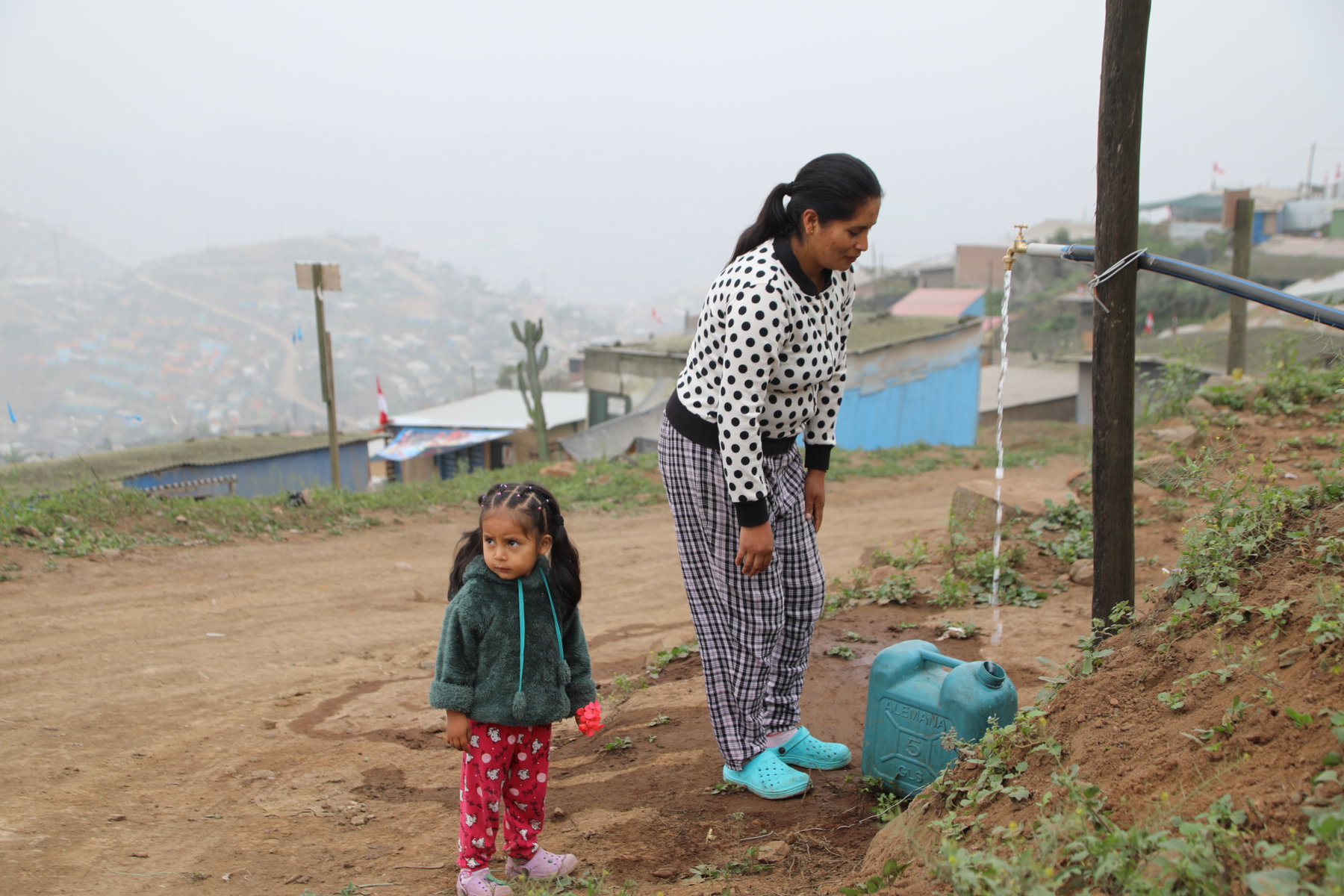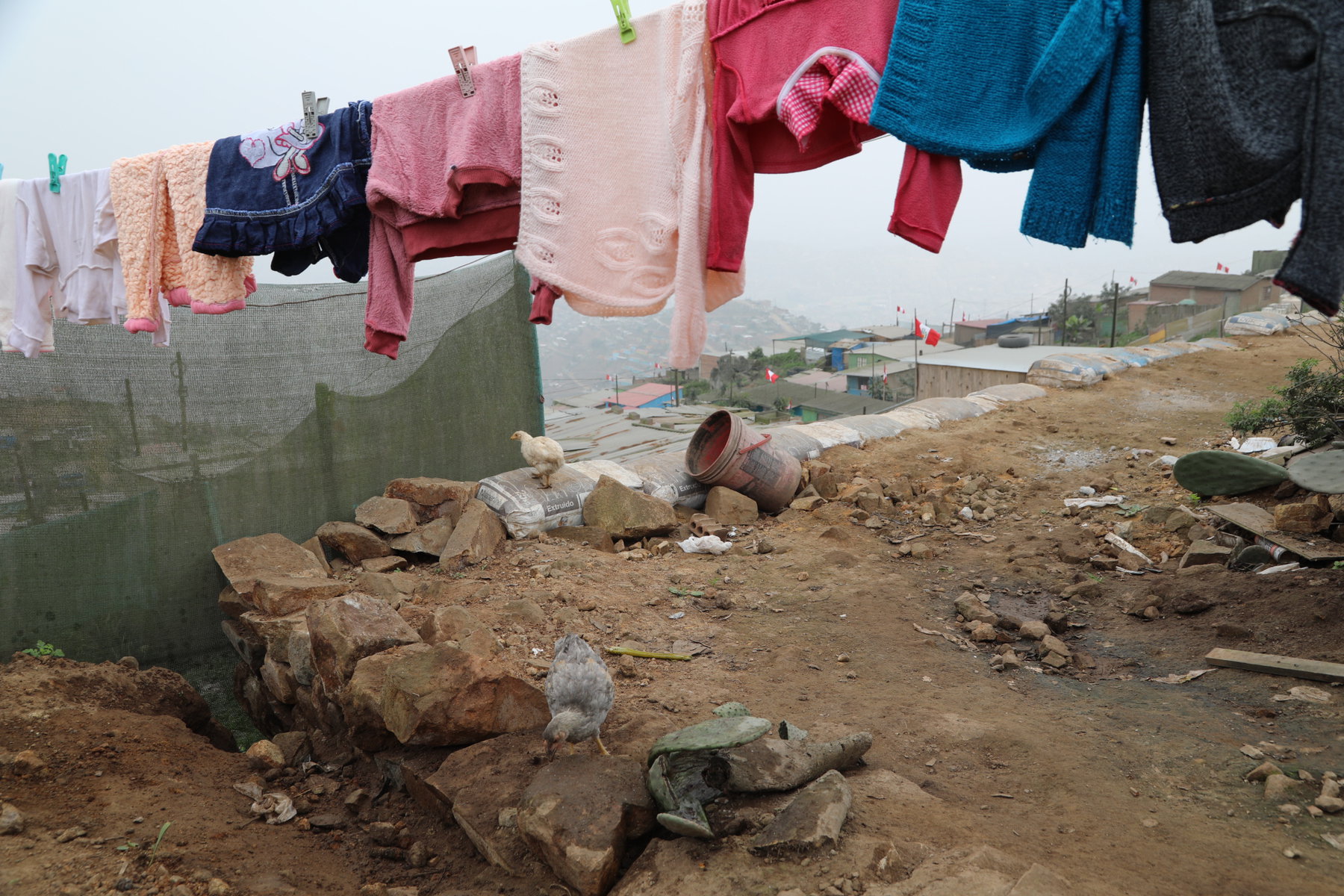

Waterline is an ongoing series that explores the solutions making rivers, waterways and ocean food chains healthier. It is funded by a grant from the Walton Family Foundation.
At the highest point of Los Tres Miradores, a terrifyingly steep urban settlement with soaring views across Peru’s capital, Lima, there is a curious set of large structures that resemble a fleet of ships in the sky. They are so-called “fog catchers.”
About 40 of these netted devices, made of high density Raschel polyethylene and spanning several meters wide, are lined up atop a misty mound and linked by a network of tubes that lead to storage containers.
Home to a population of more than 10 million, Lima is one of the driest cities in the world. It receives less than an inch of rain a year. And that drought is worsening due to climate change, particularly in low-income areas like Los Tres Miradores, whose size has ballooned with migrants fleeing worsening farming conditions in rural Peru. Two million Limeños like them do not have access to the municipal water network.
“It is a tragedy,” adds Cruz. “Everyone has the right to clean water.”
For Cruz, who grew up in Peru’s mountainous region of Cuzco, this fog represents a massive opportunity. As a boy, he had to hike for more than an hour every day across strenuous hills to collect water from the nearest source. But over time, he realized that during the rainy season, droplets of water would gather in the large leaves of banana trees. One day, he and his father built a canal system with the leaves to collect water.
“We used that water to wash and bathe ourselves and to grow things like tomatoes, lettuce, fruits, plantain,” says Cruz, who moved to Lima at the age of 25.

Shocked by the water shortages and expensive water supply that some of the city’s poorest residents were subjected to, Cruz set up El Movimiento Peruanos sin Agua in 2005. The idea was to deploy the method he learned in his hometown on a larger, better-adapted scale, which would provide free, independently sourced and easily accessible water to those who needed it the most. He began installing a traditional fog catcher model developed by a pair of Chilean and Canadian researchers in the 1980s.
In June, the project received a significant boost when it signed an agreement with the Mayor of Lima to install 10,000 more fog catchers in the hills surrounding the city in the next four years. The municipality, which relies heavily on water desalination, said the project has the potential to “reforest, create ecological lungs, ecotourism and at the same time provide water for human consumption, for bio-orchards, botanical gardens, washing clothes, utensils and more.”
In Los Tres Miradores, the 40 fog catchers — which were installed in 2021 — provide enough water for 180 families, whether to bathe, clean, drink (after being filtered at home) or to irrigate crops on small garden patches. The nonprofit provided the materials for free, and the community put together the infrastructure themselves.
Nearby, Isabel Quispe, 29, and Gabriel Jaio, 31, live with their one-year-old daughter Emy as well as a niece and her child. Together they use the water to wash clothes and dishes, bathe, and cultivate pumpkin, with plans to soon grow carrots and beetroot.
“We need the water, we couldn’t live without it,” says Jaio.

The fog catchers go some way toward addressing the grim inequalities of water supply in Peru. In Los Tres Miradores, a typical family consumes about 50 liters of water per day, according to Cruz, while the average water consumption in Lima’s richest neighborhood, San Isidro, is around 250 liters per family per day. He says that those unfortunate enough to be outside of the remit of the city’s water utility, Sedapal, have to pay 10 times more for water that is instead delivered by trucks.
Proponents believe that fog catchers have the potential to improve water supply for communities around the world amid ever-challenging circumstances. The UN, which has targeted universal access to clean water by 2030, estimates that even though water use has become nine percent more efficient, the global urban population facing water scarcity is projected to rise from 930 million in 2016 to between 1.7 and 2.4 billion in 2050.
German researcher Anne Lummerich, who has tested fog catchers for nearly 20 years, including in Lima, believes that populations will increasingly need to localize water sources. “As you see, this is the great benefit of this decentralized system,” says Lummerich. “They are cheap, easy to construct. In a world searching for water supply systems it is one important puzzle [piece] that can make an essential difference locally. It could make the difference between having water and not having water available.”

There are some issues, however. For one, fog catchers require space, which is not always easy to come by in cities, let alone urban slums. At the same time, fog catchers must be properly cleaned and maintained to stay effective. “They need maintenance and community involvement is essential,” says Lummerich. “The people need to take the responsibility to make the system sustainable.”
Most crucially, appropriate climate conditions are required. Fog isn’t everywhere.
“It’s a very intriguing idea,” says Jay Lund, a professor of civil and environmental engineering and director of the Center for Watershed Sciences at the University of California, Davis. “But for fog catching you need areas with a lot of humidity and temperature change.”

Lund explored the idea of demisting fogs over San Francisco in the aftermath of the droughts in the Bay Area between 2012 and 2016, but concluded it would likely not be economically viable. “In some parts of the world it could be ideal,” says Lund. “But for a modern affluent community you wouldn’t want to do it.”
Yet technological advances could be quickly changing that picture. The fog catchers used by El Movimiento Peruanos sin Agua cost approximately $300 each – down from nearly triple that price a decade ago. And according to Lummerich, some new designs she is developing can collect up to 2,500 liters of water per day – about 10 times the capacity of those in Lima.
Weighed down by negative news?
Our smart, bright, weekly newsletter is the uplift you’ve been looking for.Meanwhile, there are examples of fog catchers working in the Canary Islands and in Africa, and Cruz has already helped to install hundreds of fog catchers in other Latin American countries such as Bolivia, Ecuador, Colombia, Argentina and Chile. He says that a pilot has even recently been rolled out in Taiwan.
Back in Los Tres Miradores, rays of midday light begin to temporarily burn off Lima’s cloud cover. “We have to take fog catchers to the global level,” says Cruz, surrounded by the city’s lush, precipitous peaks. “We have shown that they work.”
All photos and videos for this story were taken by Peter Yeung.

